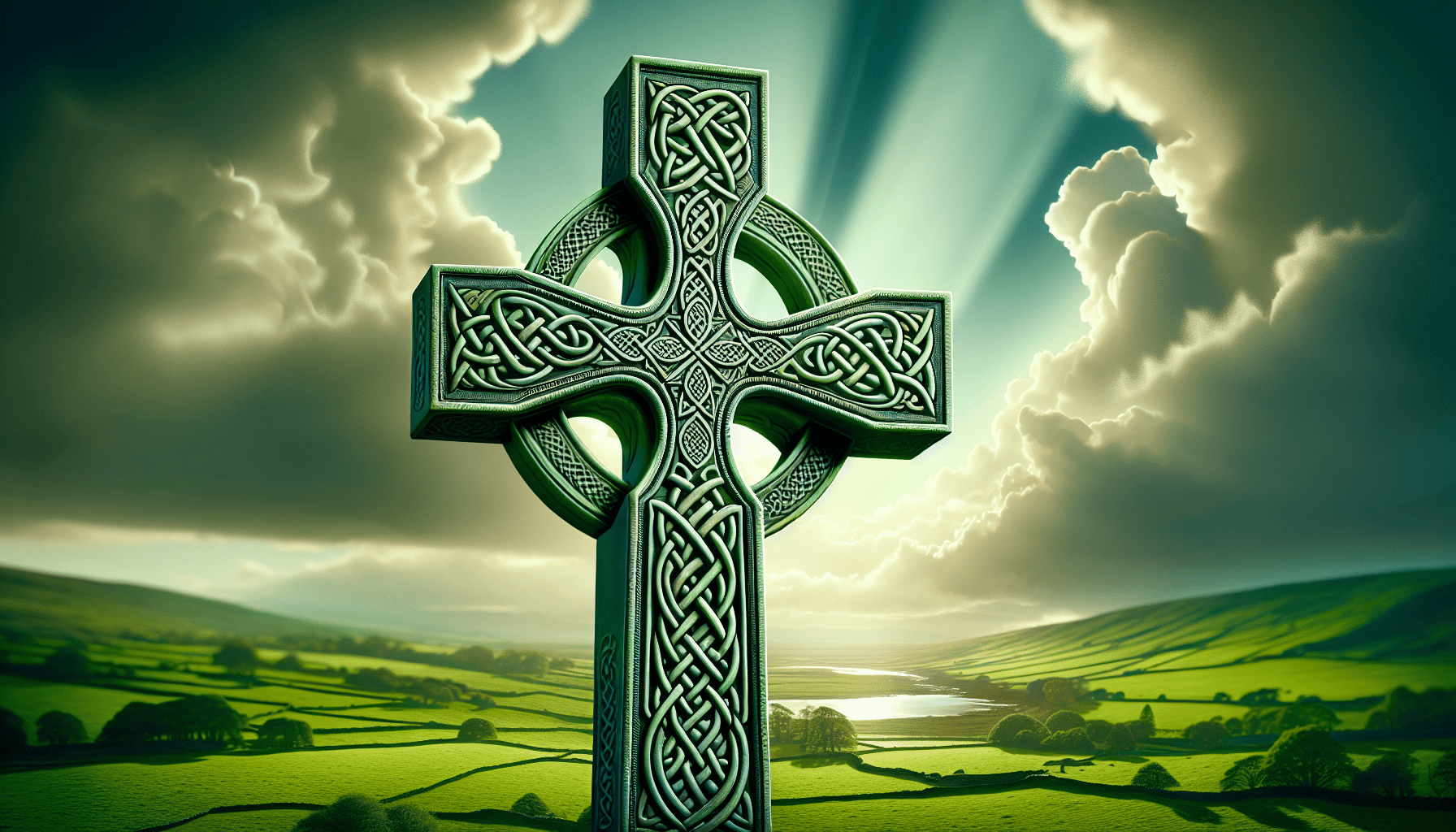St. Patrick, Ireland’s patron saint, is a key figure in the country’s conversion to Christianity and a symbol of national pride celebrated globally on March 17th. Discover his extraordinary journey from captivity to sainthood and how St. Patrick’s Day became an emblem of Irish culture and heritage.
Key Takeaways
Born into wealth in late 4th-century Britain, St. Patrick was captured by Irish raiders at age 16, sold into slavery, and after six years, escaped back to his homeland. This experience paved the way for his spiritual transformation and dedication to Christianity.
St. Patrick is credited with pioneering a method of integrating Christian teachings with Irish customs, which included using the shamrock to explain the Holy Trinity and driving snakes out of Ireland symbolically. His unique approach led to the establishment of over 300 churches and the baptism of over 120,000 individuals, profoundly influencing Irish Christianity.
The legacy of St. Patrick is celebrated globally on St. Patrick’s Day (March 17th), commemorating his contributions to introducing Christianity to Ireland and the broader cultural and spiritual transformation. His influence helped preserve Irish language, literature, and art, while promoting symbols like the color green, fostering a shared Irish identity worldwide.
The Life of St. Patrick

St. Patrick was born to wealthy Romano-British parents in the late 4th century, a life shaped by trials and transformations. His father, Calpornius, held the position of a deacon, and his grandfather, Potitus, was a priest, thus, religious influence was embedded in his upbringing. However, his faith and resilience were severely tested when he was abducted by Irish raiders at just 16 years old.
In the chilly, harsh landscapes of Northern Ireland, Patrick found himself enslaved, a drastic deviation from the comfortable life he was accustomed to. Tasked with herding sheep for a local chieftain, he spent countless days and nights on the slopes of Mount Slemish in County Antrim. Yet, it was in these desolate landscapes that the seeds of a profound spiritual transformation were sown.
Early Years and Kidnapping
Patrick was born into a wealthy Romano-British family to Calpurnius and Conchessa, and enjoyed a life of comfort and privilege. However, Patrick’s life drastically changed when he was captured by Irish pirates at the age of 16 and taken away from his family to a foreign land.
From a free son of a deacon to a slave in pagan Ireland, Patrick was forced into shepherding, bearing the harsh weather and his captors. For six long years, he lived the life of a slave, a period that would significantly shape his spiritual journey. Despite the hardship, it was here that the foundations of a great legacy were laid, a legacy that would later be celebrated worldwide as St. Patrick’s Day.
Spiritual Transformation in Captivity
Patrick, sold into slavery to an Irish chieftain named Milcho, survived six years of captivity under challenging conditions that put his faith and resilience to the test. In the solitude of the Irish wilderness, Patrick found solace in prayer, turning to his Christian faith to sustain him through the trials of enslavement. It was during this time that Patrick preached to himself, reinforcing his beliefs and commitment to his faith.
His spiritual transformation was greatly influenced by his experiences of isolation and degradation, coupled with his pre-existing Christian teachings. His period of enslavement served as a trial of his faith, leading to a profound dedication to Christianity and the cultivation of a deep reverence and love for God.
Little did he know that his years of hardship were merely a prelude to a divine mission he was yet to undertake.
Return to Britain and Preparation for Missionary Work
After six long years, Patrick managed to free himself from slavery in pagan Ireland. He journeyed two hundred miles on foot to the coast, where, by a stroke of providence, he found a ship ready to take him back to his homeland. But his escape from Ireland was not a retreat but a respite, a pause before he would return to fulfil a divine mission.
Upon his return to Britain, Patrick devoted himself to theological studies, preparing for his future mission. He had a vision that guided his path, a calling that led him back to Ireland. He spent over 15 years preparing for his mission, a testament to his unwavering faith and dedication. His famous prayer, St. Patrick’s Breastplate, reflects his deep faith with the line “Christ beneath me, Christ above me,” as he prepared to embark on his mission to spread Christianity in Ireland.
The Mission of St. Patrick

When St. Patrick arrived in Ireland, he embarked on a mission that would indelibly alter the country’s spiritual landscape. His approach was not one of outright rejection of the existing pagan practices, but of integration and adaptation, a method that would prove key to his success. Yet, his mission was not without challenges. The tribal society of Ireland was deeply rooted in its own customs and spiritual practices, making the task of introducing a new faith a daunting one.
Nevertheless, St. Patrick met these challenges with unwavering determination. His efforts resulted in:
The establishment of over 300 churches
The baptism of more than 120,000 individuals in Ireland
Playing a crucial role in shaping the future of Irish Christianity by establishing a network of monasteries to facilitate the dissemination of the faith across the country.
Adapting Pagan Rituals
One of St. Patrick’s primary strategies in his missionary work was adapting existing pagan rituals to fit Christian practices. He understood the importance of respecting the existing beliefs and practices of the Irish people and sought to incorporate these elements into the new faith.
Instances of this adaptation include the utilization of the shamrock to elucidate the concept of the Holy Trinity and the symbolism of expelling snakes to represent the eradication of paganism. This approach made Christianity more relatable to the Irish people, facilitating a smoother transition and integration of Christian rituals. The Church, too, responded favorably to St. Patrick’s method, recognizing its efficacy in facilitating the process of conversion.
The Celtic Cross
Another significant aspect of St. Patrick’s missionary work was the introduction of the Celtic Cross in Ireland. The Celtic Cross, characterized by its unique ringed design, is a powerful symbol of the fusion of pagan and Christian beliefs. It combines the traditional Christian cross with the sun symbol, a revered icon in pagan culture.
This unique design served dual purposes. It symbolized the superiority of the Christian God over the Sun god, thus asserting the dominance of the new faith. At the same time, it provided a familiar element to the pagan population, thereby facilitating the acceptance of Christianity.
Establishing Churches and Monasteries
In his mission to spread Christianity in Ireland, St. Patrick undertook the significant task of establishing churches and monasteries. These places of worship played a pivotal role in the propagation of Christianity, serving as centers for worship, education, and community.
St. Patrick is credited with:
Constructing 365 churches and monasteries throughout Ireland
These monasteries were not just places of worship, but also centers for learning
They played a crucial role in preserving the Irish language, literature, and art
Contributing to the sustenance and propagation of Irish cultural heritage.
Legends and Symbols Surrounding St. Patrick

As with any historical figure of such significance, St. Patrick’s life and mission are shrouded in a number of legends and symbols, adding layers of mystique to his persona. From the shamrock representing the Holy Trinity to the legend of driving snakes out of Ireland, each carries a piece of St. Patrick’s legacy.
While these tales may seem fantastical, they speak volumes about the influence and impact of St. Patrick’s work. They serve as a testament to his remarkable ability to weave together elements of Irish culture and Christian teachings in a harmonious blend, a characteristic that made him a beloved figure among the Irish people.
The Shamrock and the Holy Trinity
Among the various symbols associated with St. Patrick, the shamrock holds a place of particular significance. According to legend, St. Patrick employed the three-leaved shamrock to illustrate the concept of the Holy Trinity to the pagan Irish during the 5th Century.
The three leaves of the shamrock, unified in a single stem, provided a simple yet effective visualization of the complex Christian doctrine of the Trinity – the Father, the Son, and the Holy Spirit co-existing as distinct entities within a single divine essence. This ingenious use of a common Irish plant not only made the abstract concept of the Trinity more understandable to the pagan Irish but also facilitated their acceptance of the new faith.
Driving Snakes Out of Ireland

Another enduring legend associated with St. Patrick is his supposed banishment of all snakes from Ireland. According to the legend, St. Patrick chased all the snakes into the sea after they attacked him during a 40-day fast he was undertaking on a hill.
While there is no historical evidence of the existence of snakes in Ireland, this legend holds significant symbolic meaning. The snakes in the story are believed to represent the pagans or Druids of Ireland, and their banishment symbolizes the successful spread of Christianity across the country.
St. Patrick’s Writings and Prayers
In addition to his missionary work, St. Patrick is also known for his writings and prayers. His work, Confessio, serves as a spiritual autobiography, offering a glimpse into his spiritual journey. It encompasses:
The magnificence of God
His acknowledgment of his sinful adolescence
His visions of divine interaction
His longing for divine justice
In response to the kidnapping and killing of Irish Christians by Coroticus and his soldiers, St. Patrick penned the Letter to Coroticus, a powerful indictment of the mistreatment of Irish Christians by the British. His prayers, such as the St. Patrick’s Breastplate, echo his deep faith and his plea for divine protection.
Celebrating St. Patrick’s Day

Saint Patrick’s Day, celebrated on March 17th, is a global celebration of Irish culture that particularly remembers Saint Patrick, one of Ireland’s patron saints, who ministered Christianity in Ireland during the fifth century. The day commemorates Saint Patrick’s and the arrival of Christianity in Ireland, and celebrates the heritage and culture of the Irish in general, making Saint Patrick’s Day an important event in Irish culture. With various saint patrick’s day celebrations taking place worldwide, this festive occasion brings people together to honor and enjoy the rich traditions of Ireland.
In Dublin, the St. Patrick’s Day parade dates back to 1931 and has evolved into a five-day festival featuring a variety of events such as:
food
music
theater
fireworks
Meanwhile, the custom of wearing green on St. Patrick’s Day originated from Ireland’s nickname, The Emerald Isle. Over time, it has evolved to symbolize Irish heritage and is believed to make people invisible to leprechauns.
St. Patrick’s Influence on Irish Identity
St. Patrick’s influence on Irish identity extends beyond his contributions to Christianity. His teachings resulted in cultural changes that restructured social norms and advanced the Christian faith while honoring Ireland’s tribal heritage.
St. Patrick’s propagation of Christianity also significantly contributed to the preservation of the Irish language, literature, and art through the founding of monastic traditions. This had a substantial impact on the sustenance and propagation of Irish cultural elements and heritage.
The celebration of St. Patrick’s Day contributes to:
Fostering Irish national identity through the celebration of Irish culture
Unifying people of Irish heritage globally
Promoting national symbols like the color green
Providing a day for contemplation on the essence of being Irish.
Veneration and Sainthood
St. Patrick’s significant contributions to Ireland and the proliferation of Christianity led to his recognition as a saint through popular acclaim, rather than formal canonization. Saint Patrick is regarded as the patron saint of Ireland due to his credited role in bringing Christianity to the country and converting thousands of Irish people to Catholicism.
In addition to being the patron saint of Ireland, St. Patrick is also considered the patron saint of engineers and of those who fear snakes. The association with engineering is believed to originate from the legend of him introducing the concept of arches to Irish builders. The association with fear of snakes stems from the legend of him driving snakes out of Ireland, although it is more likely to symbolize his efforts in converting the Irish people to Christianity.
Notable Places Associated with St. Patrick
Not only does St. Patrick’s legacy endure through the traditions and faith he instilled in the Irish people, but also through the numerous landmarks named in his honor. These include St. Patrick’s Cathedral in Dublin, which serves as the national cathedral of the Church of Ireland and has been a significant site for many historical developments in Irish Christianity.
Another significant landmark is St. Patrick’s Cathedral in New York City, a prominent symbol of the Catholic Church in the United States. Constructed in 1858, the cathedral serves as a prominent symbol of Irish heritage in the United States. During the St. Patrick’s Day Parade in New York City, the cathedral serves as a reviewing stand, further cementing its importance in the celebration of this important day.
Summary
From a kidnapped shepherd boy to a revered saint, St. Patrick’s journey is a testament to the power of faith and resilience. His teachings and missionary work have left an indelible mark on Irish culture and Christianity. The legends, symbols, and places associated with him continue to inspire and shape our understanding of St. Patrick, a figure of faith, courage, and transformation. As we celebrate St. Patrick’s Day with parades, wearing green, and other festivities, let us remember the man behind the holiday, and his enlightening legacy that continues to inspire millions around the world.
Frequently Asked Questions
Why is St Patrick no longer a saint?
St. Patrick is no longer a saint because he was never formally canonized by the Catholic Church, as the formal canonization process did not exist during the first millennium. Although he is celebrated as the patron saint of Ireland, he remains a saint in name only.
What does St Patrick protect you from?
St. Patrick protects you from snake infestation and bites, and he is also a patron of engineers due to the large number of churches he constructed in Ireland.
Why do we celebrate St Patricks day?
St. Patrick’s Day is celebrated to commemorate the death of St. Patrick, who was a fifth-century missionary and bishop in Ireland, responsible for bringing Christianity to the country. It is a day to honor Irish culture and heritage, marked by public parades, festivals, and wearing green attire.
What was the significance of the shamrock in St. Patrick’s teachings?
The significance of the shamrock in St. Patrick’s teachings lies in its use to illustrate the concept of the Holy Trinity to the pagan Irish, making it more relatable and understandable. This helped in conveying the abstract concept effectively to the people.
What is the legend of St. Patrick driving snakes out of Ireland?
St. Patrick is said to have driven the snakes out of Ireland after they attacked him during a fast, symbolizing the spread of Christianity across the country. This legend is not considered historically accurate.

